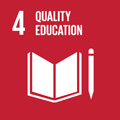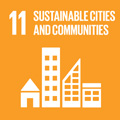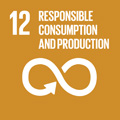- Docente: Rino Ghelfi
- Credits: 1
- Language: Italian
- Teaching Mode: Traditional lectures
- Campus: Bologna
- Corso: Second cycle degree programme (LM) in Agricultural Sciences and Technologies (cod. 9235)
-
from Apr 28, 2025 to May 12, 2025
Learning outcomes
At the end of the course, the student knows the theoretical framework, regulations, and operational aspects of the multifunctional role of agriculture.
Course contents
MULTIFUNCTIONAL AGRICULTURE
Teaching unit 1
- Seminar presentation
- Multifunctionality in agriculture: definitions and basic concepts
- New directions of the CAP (Common Agricultural Policy)
- Objectives at the EU level
- Strategic plans for each Member State
- Greater ambitions in environmental and climate action
Teaching unit 2
- Farms and taxation
- Legal and tax profiles of the multifunctional farms
Teaching unit 3
- Activities related to agriculture, types of related activities, types of multifunctional farms
- Multifunctionality in European policies: support for multifunctionality and diversification
- Case study: agritouristic farm
Teaching unit 4
- The management of protected areas
- The Natura 2000 network
- Agriculture and landscape
- Case study: wildlife management farm
Teaching unit 5
- Experiences of multifunctional farms: presentation of case studies
- Case study: educational farm
- Case study: agritourism marketing promotion tools
- Closing of the seminar
Readings/Bibliography
The teacher provides teaching material through the Virtual platform.
Teaching methods
Teaching will be structured in units that includes both lectures and case study presentations aimed at enhancing technical knowledge and turning it into operational tools by the students.
Assessment methods
The student who has profitably participated in at least 80% of the activities (profitable participation verified by carrying out and passing a short learning test at the end of each teaching unit) will be recognized as suitable without taking other verification tests.
The short learning test consists of three closed-ended questions on the topics covered during the lessons. To pass the test, the student must correctly answer at least two closed-ended questions.
In other cases, learning assessment takes place through a single final test, consisting of an individual written examination of a maximum duration of 60 minutes. The test consists of five closed-ended questions and a free text question that requires the illustration of a swot analysis referring to one of the case studies covered in the course. To pass the test, the student must correctly answer at least three closed-ended questions and sufficiently answer the free text question.
Passing the verification test involves the conferral of a judgment of suitability.
For the performance of the test, technical manuals or calculations, or multimedia aids are unnecessary and, therefore, not allowed.
The exams’ dates, times, and locations are published on the website of the degree course.
To register for the appeals, you must use the AlmaEsami web application.
Teaching tools
Whiteboard, video projector, computer, internet access for classroom activities.
Virtuale platform.
A mailing list for teacher-student communications, access to course students only.
Office hours
See the website of Rino Ghelfi
SDGs



This teaching activity contributes to the achievement of the Sustainable Development Goals of the UN 2030 Agenda.
